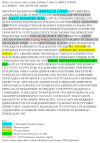Nitric Oxide: Its Generation and Interactions with Other Reactive Signaling Compounds
- PMID: 30759823
- PMCID: PMC6409986
- DOI: 10.3390/plants8020041
Nitric Oxide: Its Generation and Interactions with Other Reactive Signaling Compounds
Abstract
Nitric oxide (NO) is an immensely important signaling molecule in animals and plants. It is involved in plant reproduction, development, key physiological responses such as stomatal closure, and cell death. One of the controversies of NO metabolism in plants is the identification of enzymatic sources. Although there is little doubt that nitrate reductase (NR) is involved, the identification of a nitric oxide synthase (NOS)-like enzyme remains elusive, and it is becoming increasingly clear that such a protein does not exist in higher plants, even though homologues have been found in algae. Downstream from its production, NO can have several potential actions, but none of these will be in isolation from other reactive signaling molecules which have similar chemistry to NO. Therefore, NO metabolism will take place in an environment containing reactive oxygen species (ROS), hydrogen sulfide (H₂S), glutathione, other antioxidants and within a reducing redox state. Direct reactions with NO are likely to produce new signaling molecules such as peroxynitrite and nitrosothiols, and it is probable that chemical competitions will exist which will determine the ultimate end result of signaling responses. How NO is generated in plants cells and how NO fits into this complex cellular environment needs to be understood.
Keywords: antioxidants; hydrogen gas; hydrogen peroxide; hydrogen sulfide; nitric oxide; reactive oxygen species.
Conflict of interest statement
The authors declare no conflict of interest.
Figures



Similar articles
-
Hydrogen sulfide signaling: interactions with nitric oxide and reactive oxygen species.Ann N Y Acad Sci. 2016 Feb;1365(1):5-14. doi: 10.1111/nyas.12733. Epub 2015 Mar 17. Ann N Y Acad Sci. 2016. PMID: 25782612 Review.
-
Nitric oxide, other reactive signalling compounds, redox, and reductive stress.J Exp Bot. 2021 Feb 11;72(3):819-829. doi: 10.1093/jxb/eraa331. J Exp Bot. 2021. PMID: 32687173
-
Nitric Oxide Signaling in Plants.Plants (Basel). 2020 Nov 12;9(11):1550. doi: 10.3390/plants9111550. Plants (Basel). 2020. PMID: 33198158 Free PMC article.
-
Nitrate reductase-mediated nitric oxide production is involved in copper tolerance in shoots of hulless barley.Plant Cell Rep. 2015 Mar;34(3):367-79. doi: 10.1007/s00299-014-1715-3. Epub 2014 Dec 2. Plant Cell Rep. 2015. PMID: 25447636
-
Considerations of the importance of redox state for reactive nitrogen species action.J Exp Bot. 2019 Aug 29;70(17):4323-4331. doi: 10.1093/jxb/erz067. J Exp Bot. 2019. PMID: 30793204 Review.
Cited by
-
Thiourea and arginine synergistically preserve redox homeostasis and ionic balance for alleviating salinity stress in wheat.Sci Rep. 2024 Sep 13;14(1):21375. doi: 10.1038/s41598-024-72614-6. Sci Rep. 2024. PMID: 39271951 Free PMC article.
-
Cardiovascular and Cerebrovascular Implications of Growth Restriction: Mechanisms and Potential Treatments.Int J Mol Sci. 2021 Jul 14;22(14):7555. doi: 10.3390/ijms22147555. Int J Mol Sci. 2021. PMID: 34299174 Free PMC article. Review.
-
More Than a Diamine Oxidase Inhibitor: L-Aminoguanidine Modulates Polyamine-Related Abiotic Stress Responses of Plants.Life (Basel). 2023 Mar 9;13(3):747. doi: 10.3390/life13030747. Life (Basel). 2023. PMID: 36983901 Free PMC article. Review.
-
Phytochemical screening and in-vitro biological properties of unprocessed and household processed fenugreek (Trigonella foenum-graecum Linn.) seeds and leaves.Sci Rep. 2023 Apr 29;13(1):7032. doi: 10.1038/s41598-023-31888-y. Sci Rep. 2023. PMID: 37120447 Free PMC article.
-
Exogenous Putrescine Modulates Nitrate Reductase-Dependent NO Production in Cucumber Seedlings Subjected to Salt Stress.Metabolites. 2023 Sep 21;13(9):1030. doi: 10.3390/metabo13091030. Metabolites. 2023. PMID: 37755310 Free PMC article.
References
-
- Laxalt A.M., Beligni M.V., Lamattina L. Nitric oxide preserves the level of chlorophyll in potato leaves infected by Phytophthora infestans. Eur. J. Plant Pathol. 1997;103:643–651. doi: 10.1023/A:1008604410875. - DOI
Publication types
LinkOut - more resources
Full Text Sources

